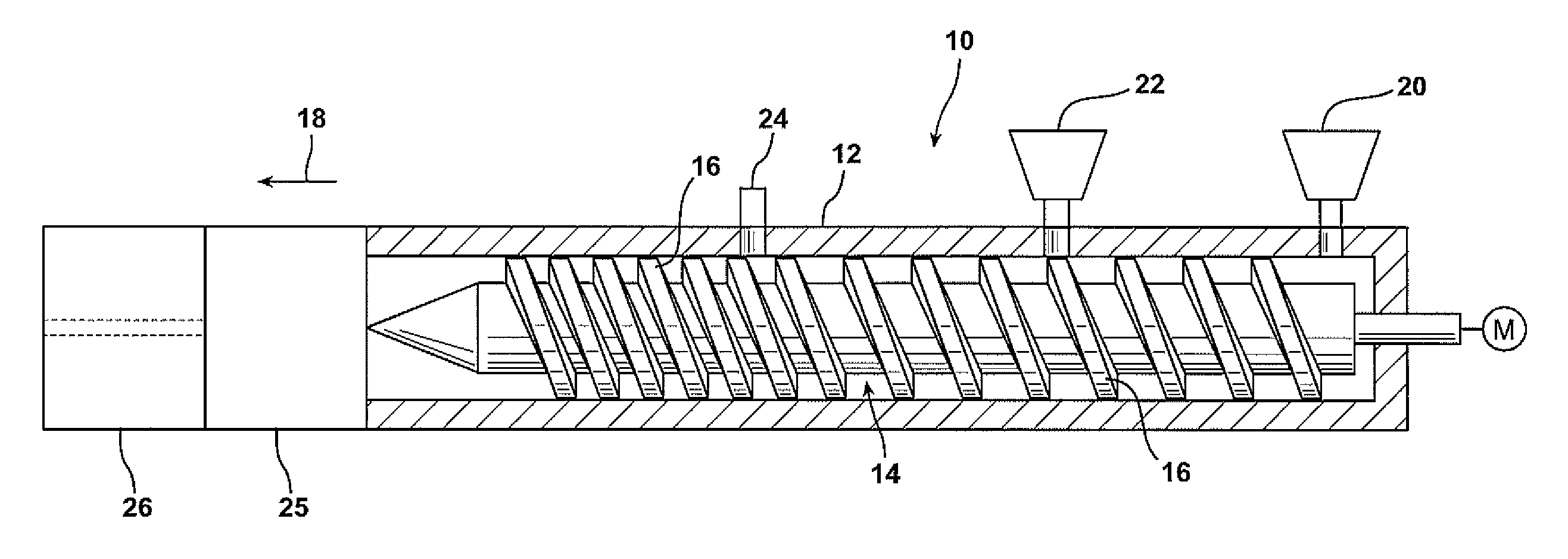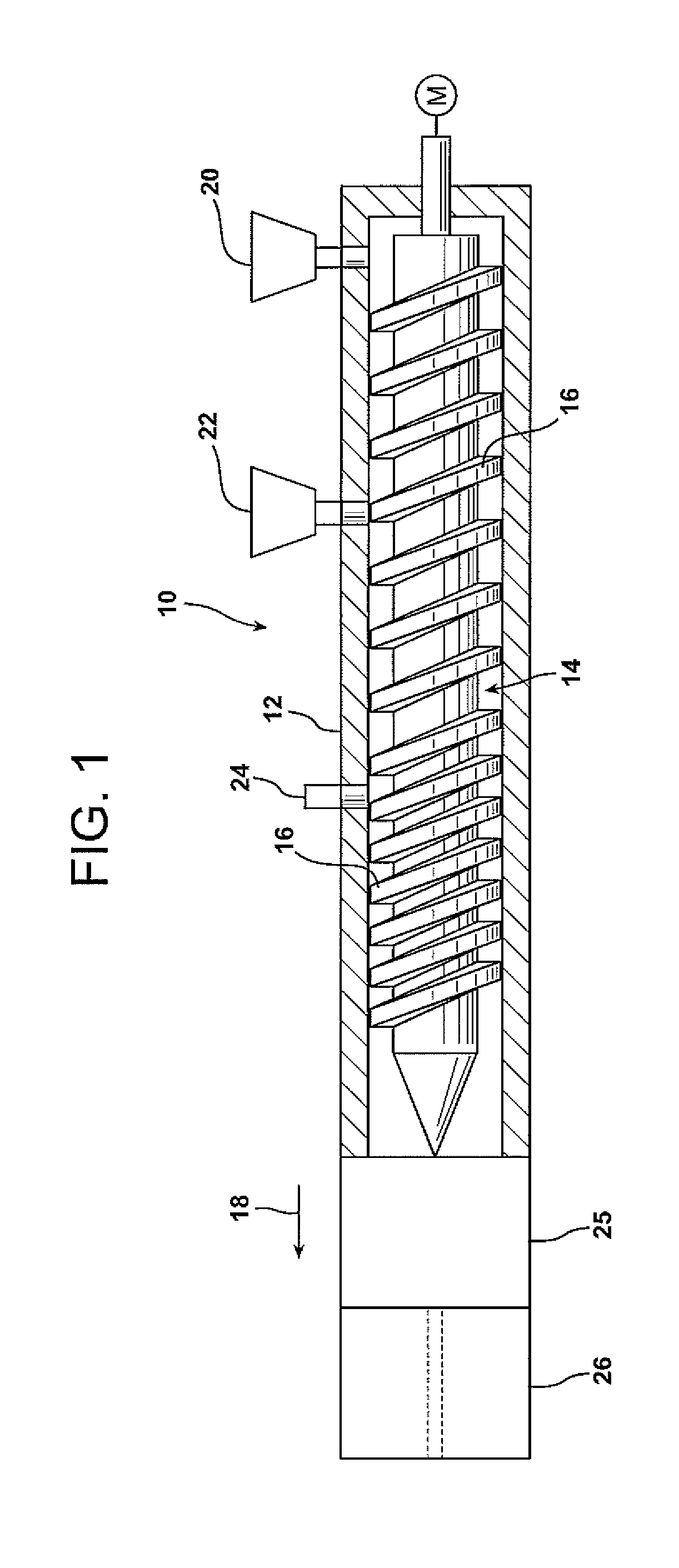Extruded Polystyrene Foam Containing Propylene Carbonate, Ethylene Carbonate or Butylene Carbonate as a Process Aids
a polystyrene foam and process technology, applied in the field of polystyrene foam, can solve the problems of increasing the number of governments worldwide mandated the elimination of cfc, reducing the insulative value of foam, contributing to global warming potential, etc., and achieves low global warming potential, easy to manufacture, and easy to use
- Summary
- Abstract
- Description
- Claims
- Application Information
AI Technical Summary
Benefits of technology
Problems solved by technology
Method used
Image
Examples
example 1
Effect of Addition of Propylene Carbonate
[0071]A series of experiments were conducted in order to investigate the relative performance of foams formed by the inventive composition containing propylene carbonate compared to foams produced with HFC and no propylene carbonate. Compositions containing polystyrene, a 50:50 blend of 1,1-difluoroethane (HFC-152a) and 1,1,1,2-tetrafluoroethane (HFC-134a), nanographite, and propylene carbonate were formed according to the extrusion method described in detail above. In particular, the polystyrene and nanographite were compounded and heated to a melt mixing temperature of approximately 325° F. to form a melt polymer material. The 1,1-difluoroethane (HFC-152a) and 1,1,1,2-tetrafluoroethane (HFC-134a) blend and propylene carbonate and were then simultaneously mixed into the polymer melt at a first pressure from 2850-3300 psi to generally disperse the blowing agent and propylene carbonate homogeneously in the melt polymer material and form a foam...
example 2
Further Effect of Addition of Propylene Carbonate
[0077]A second series of experiments were conducted in order to further investigate the effect of propylene carbonate. In these experiments, foams were produced using the process parameters set forth above in Example 1. The amounts of propylene carbonate and nanographite added to the sample compositions are set forth in Table 3.
TABLE 3Further Effect of Propylene CarbonatePropyleneDieAverageWater VaporCarbonateGraphiteDensityPressureCell SizePermeabilitySample(%)(% actual)(pcf)(bars)(mm)X:Z(% / inch)50.00.51.7776.50.1740.940.73161.00.51.9153.10.1881.080.83671.00.01.7754.60.2111.100.795
[0078]As shown in Table 3, the addition of 1.0% by weight propylene carbonate to the foamable composition lowered the die pressure from 76.5 bars (Sample 5) to 53.1 bars (Sample 6). This reduction of die pressure is an approximate 30% improvement in the processability of the foam. Ease of processability reduces manufacturing costs, reduces waste that may oc...
PUM
| Property | Measurement | Unit |
|---|---|---|
| Percent by mass | aaaaa | aaaaa |
| Percent by mass | aaaaa | aaaaa |
| Percent by mass | aaaaa | aaaaa |
Abstract
Description
Claims
Application Information
 Login to View More
Login to View More - R&D
- Intellectual Property
- Life Sciences
- Materials
- Tech Scout
- Unparalleled Data Quality
- Higher Quality Content
- 60% Fewer Hallucinations
Browse by: Latest US Patents, China's latest patents, Technical Efficacy Thesaurus, Application Domain, Technology Topic, Popular Technical Reports.
© 2025 PatSnap. All rights reserved.Legal|Privacy policy|Modern Slavery Act Transparency Statement|Sitemap|About US| Contact US: help@patsnap.com



